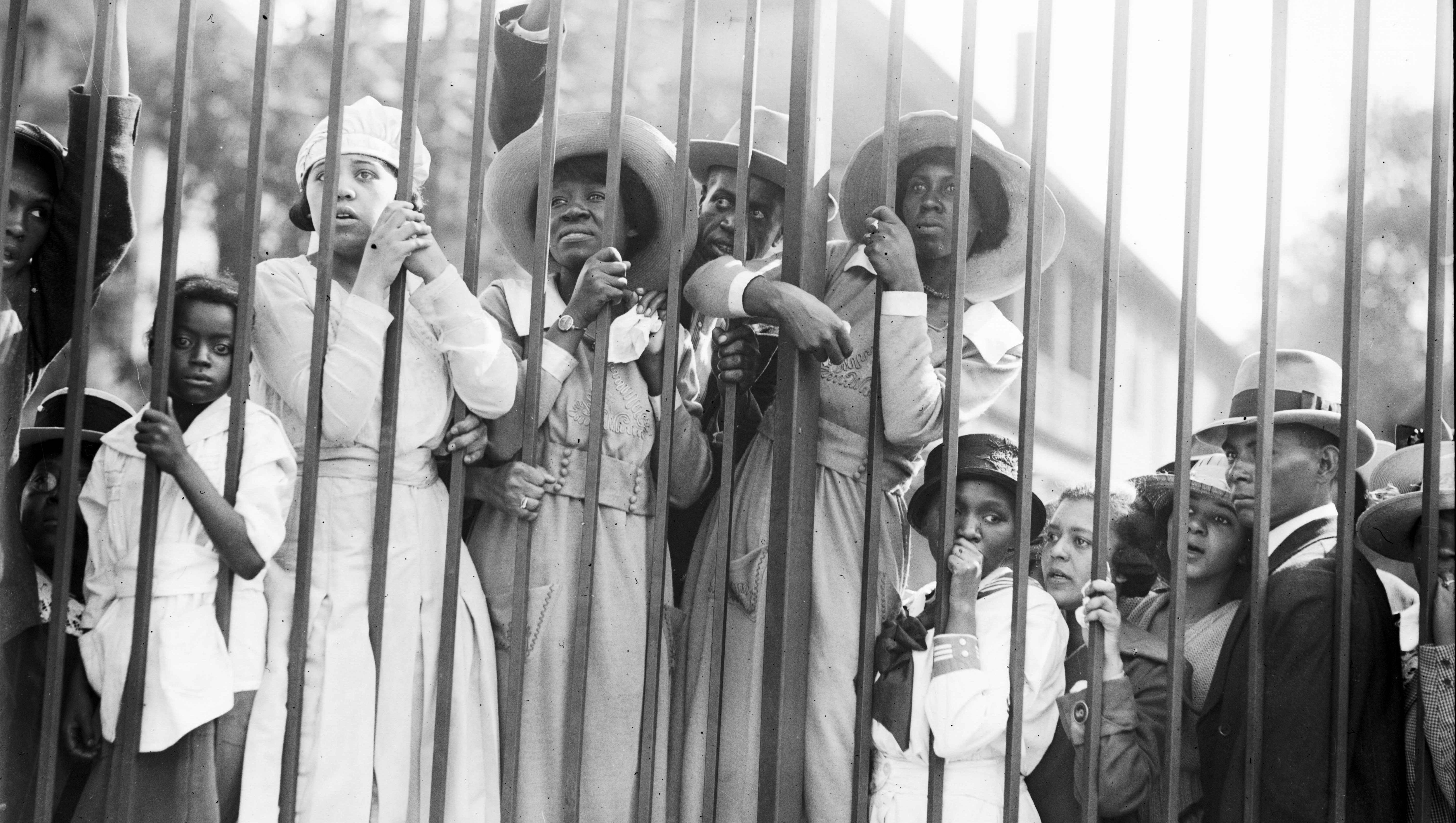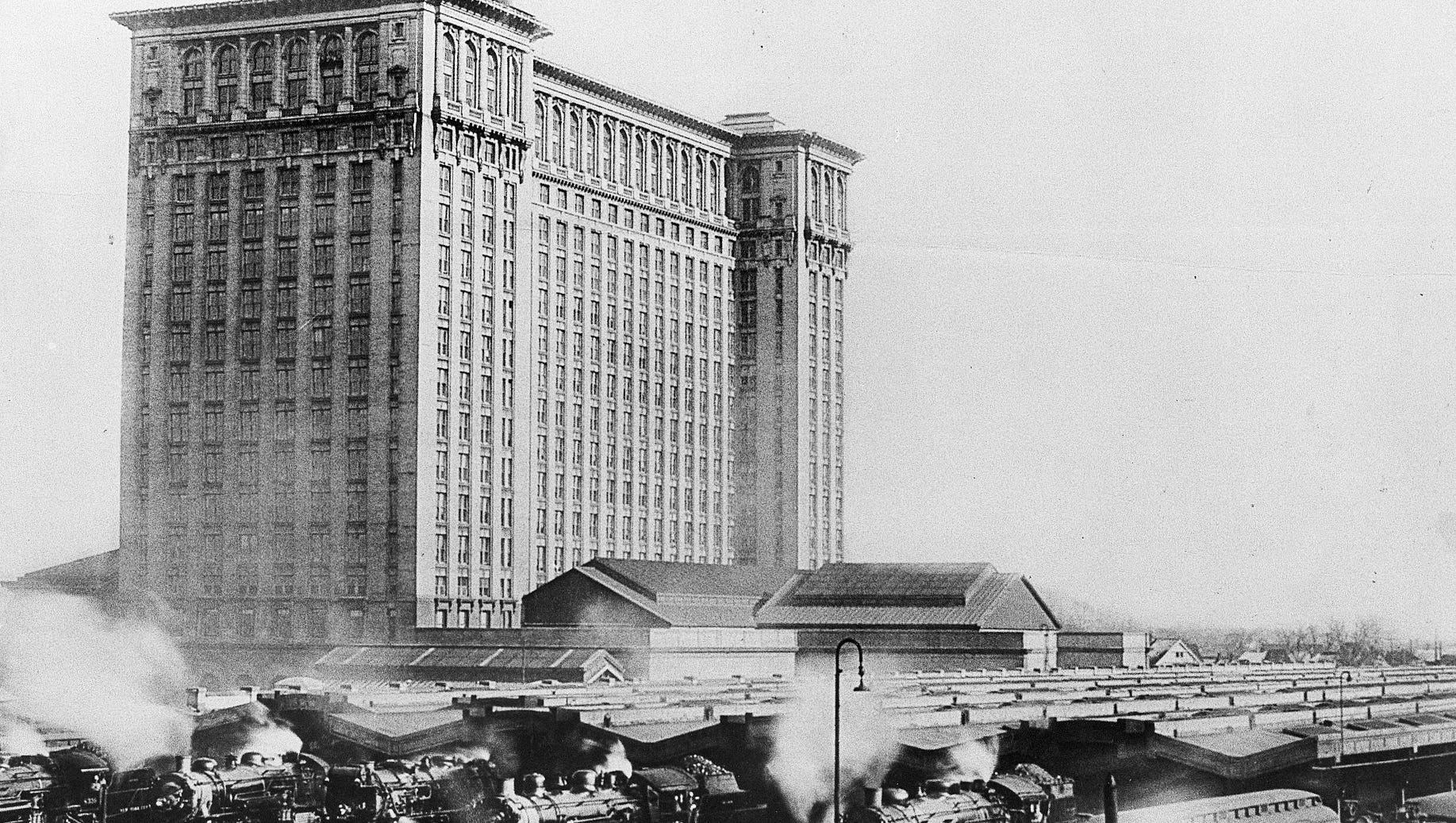Purchase of train depot adds new chapter to long history
 Breana Noble
Breana Noble
Michigan Central Depot was busy, Bill Worden recalled of his visit to the station in the 1940s during its heyday. People walked all around, catching trains and visiting the restaurant and other amenities the station offered. Worden bought a candy bar from a round stand in the middle of the grand waiting room that seemed overwhelming to a young man.
"It was pretty overwhelming to a 5- or 6-year-old," said Worden, who is now 75 and the former director of historic designation in Detroit. "In the late '40s, it was a very busy space. There wasn’t much to compare it to. What other place in Detroit was that busy? Maybe a big church, but people lined up in pews and were quiet. The depot was pretty impressive and pretty noisy."

The crowds and smoke that once filled Michigan Central Depot 105 years ago is long gone, giving way to looters and vandals to defile the Corktown citadel. For 30 years, the historic eyesore behind Roosevelt Park has stood as a reminder for Detroit’s collapse.
Ford Motor Co.’s purchase of the depot – which the owner, the Moroun family, confirmed Monday – may be the most poignant symbol for Detroit’s comeback. Companies such as Accenture PLC, Google, Microsoft, and Tata Technologies are reversing the exodus by moving their employees from the suburbs to downtown. Dearborn-based Ford began its return to Detroit last month when it settled one of its teams into a Corktown facility known as The Factory four blocks east of the depot.
Now the automotive company is taking on a challenge that no one has succeeded in achieving: to resurrect the old station.

‘A sentinel of progress’
Calamity inaugurated Michigan Central Depot. A fire at 2:10 p.m. on Dec. 26, 1913, at the former Michigan Central Railroad station on Third and Fort rushed the new depot, the tallest in the world at the time at 230 feet, into service. The company had scheduled the dedication for the following year. Its first train left at 5:20 p.m. that day.
“Thus the new station stood last night, lights shining from windows high above the building line in the neighborhood, a sentinel of progress and a monument to the old depot which burned,” the Detroit Tribune reported two days later.
In the early 1900s, Michigan Central Railroad’s business was booming, seen in the $16 million investment ($405 million today) it made in the structure, land, and an underwater railroad tunnel in southwest Detroit. Michigan Central decided it needed a larger depot and picked Corktown for easy access to the tunnel. Construction began in 1912.
The architects of New York City's Grand Central Station, Warren & Wetmore of New York and Reed and Stem of St. Paul, Minnesota, had once again teamed up to design the station. Reed and Stem were specialists in depots, while Warren & Wetmore had designed hotels such as the Ritz-Carlton. The dual nature of the Michigan station and 18-story office tower show that partnership.
"They weren't fooling around," Worden said. "There was enormous optimism in Detroit at the time. It was right in the early part of the automobile boom. They built it for what they thought Detroit was going to be. We can hope that there’s a parallel between this moment and when it was built."

Rise and fall
At its peak, 200 trains a day passed through the station. In the 1940s, 4,000 passengers a day walked across marble floors of the Roman bathhouse-inspired waiting room. Another 3,000 people worked in the office tower.
Business trips, vacations, and family visits brought people to and from the building. Presidents Herbert Hoover, Harry S. Truman and Franklin D. Roosevelt; actor Charlie Chaplin; and inventor Thomas Edison entered Detroit through its gates. During both world wars, the depot sent off many soldiers and sailors and welcomed back those lucky enough to make it home.
Not long after, though, personal vehicles and affordable air travel brought blows to train lines. A lack of parking and the death of the city’s trolley service also hurt the station. New York Central System, which owned Michigan Central Railroad, offered the depot and 400 other passenger stations for sale in 1965. The price was $5 million ($46 million today). No one bought it.
In 1976, ridership had fallen to 1,000 people a day. The station closed its grand waiting room and front entrance, forcing a flower shop and other amenities to leave. The space became a storage room. Its mahogany benches, once always occupied, sold for $25 apiece.
The declining industry forced New York Central join forces with rival Pennsylvania Railroad in 1968. Two years later, though, the merged company declared bankruptcy – the largest in American history at that point.
Government-run Amtrak took over the station in 1971, hoping to revitalize it. With the help of an oil crisis in 1973, it invested more than $1 million into updates to the ticket booth and adding a bus terminal. The station reopened its waiting room in June 1975, two months after finding a place onto the National Register of Historic Places.
By 1985, Amtrak was running only six to eight trains a day, and soon it set up a temporary station near Michigan Central Depot in 1988. It abandoned that site for a new facility on Woodward in the New Center area in 1994. The last train left Michigan Central Depot at 11:30 a.m. Jan. 5, 1988, heading toward Chicago.

Finding a new use
Although vacant and deteriorating, the historic site continued to stand as it struggled to find its purpose in a post-passenger train world.
One owner sought to turn the building into a world trade center. Another saw it as a nightclub and hotel, though laws that forbid casinos stopped those plans.
A company owned by billionaire Manuel “Matty” Moroun took over in 1992, according to his son, Matthew Moroun. The Morouns heard many suggestions for the building, including an aquarium, a beer hall, and a vertical farm, Matthew Moroun said on Monday. In 2001, they announced plans to renovate the station into an international trade and customs center. Doubts on the project were cast, though, as estimates for the plan ranged from $100 million to $300 million.

By then, scavengers had stolen stealing copper, marble, and granite from the building’s architecture, and vandals had defiled it with spray paint; some tags rose 15 feet tall. It became a set for apocalyptic movies such as “The Island” and “Transformers.” City building inspectors had recommended tearing down the station since at least 1994, a problem because it was a national historic site. Additionally, demolition experts calculated its destruction would cost $5 million to $10 million.
More:From the archives: Searching for R. Kelley
More:From the archives: Frozen in indifference
Mayor Kwame Kilpatrick’s office in 2003 announced it would be the new Detroit City Police headquarters. It was planning to invest $100 million to $150 million into the project over 18 months, but the costs and the depot's distance from the courts and jails made it unfeasible.
In 2013, City Council directed the Morouns to demolish the building. They ignored the orders. The family says it has invested several million dollars in renovations, including removing asbestos, adding lighting, and replacing more than 1,000 broken windows. Still, the old station needs much in repairs.
“I hate being associated with that,” Moroun told The Detroit News in 2008. “What the hell am I supposed to do with it? I can’t sell it, and I won’t give it away for a dollar. I can’t redevelop it. Who would want to go in there? Nobody. There’s no reason. That’s throwing money to the wind.”
Now as Detroit appears to make a comeback, Ford seems to think otherwise, ushering the symbol of the city's fall into a new century.
"Ten years ago, no one though this was possible," said Dan Austin, a former Detroit Free Press reporter who researched the station for his website HistoricDetroit.org. "Michigan Central Station was once a symbol for the busy, new, great Detroit, then it was a symbol for its decline, and now it's a symbol for its comeback."